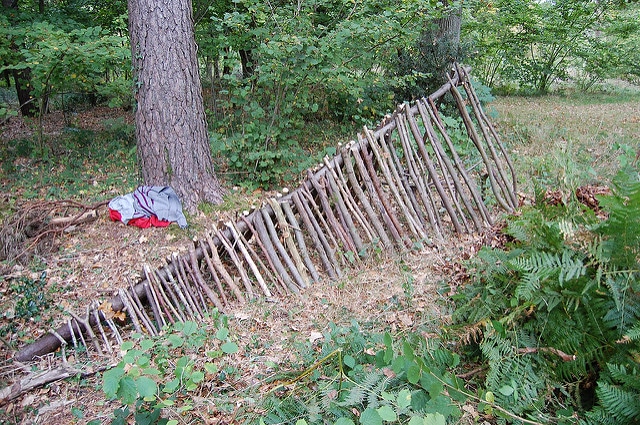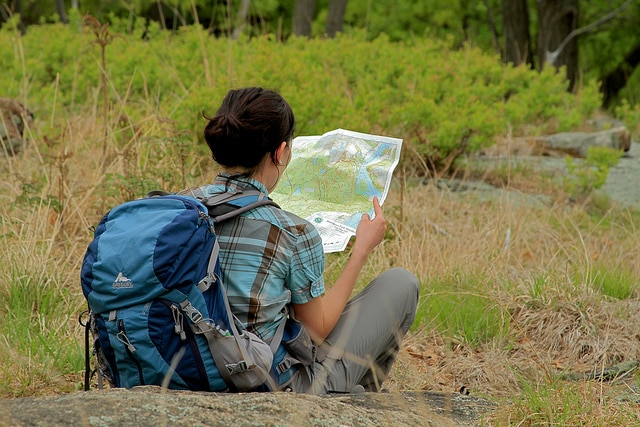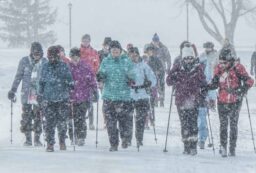When I was a kid, I once got lost in the woods when I was camping with my parents. They never found out about the situation because I managed to find my way back and didn’t tell them I’d been lost (I didn’t want them to revoke my wandering privileges). However, I now know that I am actually pretty lucky. I basically wandered around until I was able to find my way back – which is exactly what you should NOT do. Before you go hiking or take your kids into the woods, please make sure to learn these rules about what to do if lost in the woods and ensure your kids know them too!
Stop!
Sometimes you think you are on the trail and suddenly realize that you have somehow gone off path. Or maybe you saw something interesting off the trail and went to explore, and then you can’t find your way back. Your instincts are to go “just a bit further” to find your way back. This instinct is dangerous and can get you more lost.
If you are lost in the woods, then you need to STOP right away.
Why is it so important to stop? Because we humans have a weird tendency to walk in circles. As this article says, it is surprisingly hard to walk straight. Researchers even tested this by putting people in the desert and also in the woods. All the subjects ended up walking in big circular motions. Only when people have clear visual cues are they able to walk in straight lines.
Consider that most dead hikers are found within one mile – if not 100 meters – from where they got lsot and you’ll see why it is so important to just STOP. As this old guide from the US Forest Service says, use your head, not your legs.
Assess the Situation
Now that you’ve stopped walking and acknowledged that you are lost, you can assess the situation. Ask yourself these questions:
- Are you still on a trail?
- What are the chances that someone else will come by, such as if you are in a popular hiking area?
- What supplies do you have with you?
- Can you recognize any landmarks, like a mountain ridge?
- Does anyone know that you are hiking and is expecting you back? How long will it take before they realize that I am lost in the woods?
- Is it almost night? What are the weather conditions?
- How prepared am I for survival?
Make a Plan
How you answered the questions above will determine what you do next. You have three basic options: Try to find your way back, Signal for help, or Prepare for survival.
Option 1: Try to Find Your Way Back
In most cases, it is probably best to just stay where you are until someone finds you. But, if you are in a very secluded place and don’t think anyone will come by soon or you think you know where you are, then you can try to find your way back.
Ideally, you have a compass. Pick a direction and use your compass to walk in a STRAIGHT LINE in that direction. If you don’t have a compass, you can help yourself walk straight by choosing a close-by landmark (like a tree) straight ahead and walking to it. Once you get to the landmark, choose a new landmark and walk towards it.
Make sure to leave a “bread crumb trail.” For example, break some branches to mark your path. There are two reasons for this. The first one is that you will be able to find your way back to your starting point. The second reason is because anyone looking for you will be able to follow your trail.
Option 2: Try Signaling for Help
When you go hiking in the woods, you should always have a whistle and matches with you (read this list of things to pack when hiking).
The international hiker’s whistle code is:
- 1 blast = STOP
- 2 blasts = Come to me
- 3 blasts = Come to me quickly!
To use it when lost in the woods, blow your whistle three times. Then wait and listen for voices. If you don’t hear anyone, then blow three times again. Repeat.
Use your matches to create a signal fire. You’ll want it to be on a high place. And remember that 3 is the international signal for help, so you’ll want to make three signal fires. Read this post about how to make a signal fire.
Option 3: Prepare for Survival
Hopefully it won’t come to this, but you’ve got to be prepared to survive the night in the woods if you are lost. Before night sets (big emphasis on before), make sure you have everything you need for survival.
The three survival necessities are: Water, Shelter, and Warmth.
Water:
You can go about 3 weeks without food, but only 3 days without water. So water is going to be a big priority! Hopefully you have some water in your pack. If not, don’t panic – but also don’t start gulping down stream or river water. It may look clean, but it could contain pathogens like giardia. The last thing you want is to be lost in the woods and have diarrhea! There are a few survival tricks for finding and filtering water in the woods – like making your own water filter out of charcoal, gravel, and leaves.
Shelter:
When a New Zealand woman got lost in the woods overnight, so she buried herself in dirt and leaves to stay warm. This tactic worked well for her, but wouldn’t have been so effective if it had rained. Instead, it is better to make yourself a survival shelter.
It is actually fairly easy to make a survival shelter, even if you don’t have any gear. In this photo below, you can see the skeleton of an A-frame debris shelter. After putting up the skeleton, you put a lot of leafy branches on top. The leaves will help trap warmth in the shelter and keep you dry. Add some more leaves inside and it will even be comfy.

Staying Warm:
Building a good survival shelter will help you stay warm. But there are other considerations too. First off, you need to make sure you stay dry. If your clothes are wet, take them off and get them dry. Make a fire if you can, and gather enough branches to keep the fire going all night. Otherwise, you’ll want to conserve your energy by resting as much as you can.
Follow these rules when lost in the woods and you’ll be found quickly – and be found alive.
Have you ever gotten lost in the woods while hiking?
Image credits:
“Explorer” (CC BY 2.0) by sakeeb
“Skeleton of a debris shelter” (CC BY-NC-ND 2.0) by emily_*













Post your comments